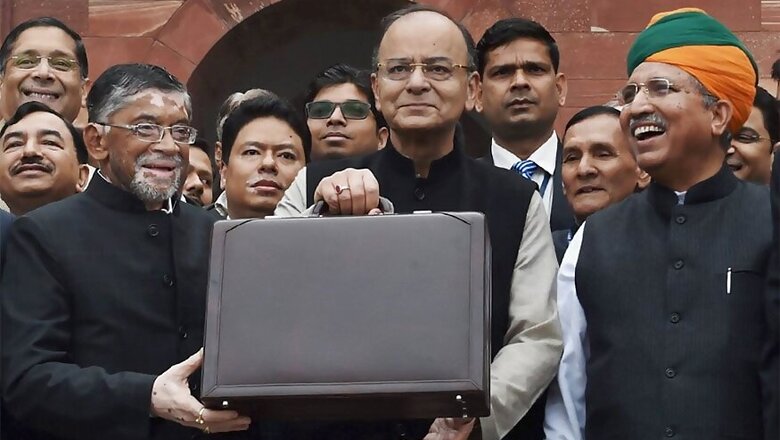
views
Political funding reform in India is not just about the electoral process but also about perception of the voters about political parties and candidates. There was over Rs 5,500 crore collected by political parties to contest the 2014 Lok Sabha elections, according to reports, without any record of the funders or where the money had come from.
Identities of individuals, organizations, or companies who donated to political parties remain hidden because of two reasons. One, the hypocrisy of political ideology and promises could be exposed when identity of the donors was revealed, and two, the donors might be linked to the benefits of policies of governments.
Voter perception, therefore, had been one of the main reasons why despite tax exemptions political funding had never been transparent in India. This upset the level-playing field of democracy and well-funded political parties won elections through spending money they got from questionable sources.
The Finance Minister in his Budget 2017 speech had mentioned the reluctance of donors to reveal their names, as they feared “adverse consequences.” However, none of the measures announced by the government have addressed this apprehension, or could prevent political parties from continuing to accept cash donations without declaration. Such donations from unknown sources contributed to 69 percent of all political funding in India today, according to the Association of Democratic Reforms.
This is not a new trend in political funding in this country; election finance reform had been pending from 1973, when the first electoral reform bill was contemplated. It is, therefore, surprising that the government should not have addressed the deeper and more fundamental issues of perception while engaging with electoral finance reform.
Various committees set up in past to examine electoral reforms had repeatedly stressed the criticality of addressing the increasing impact of money on elections and the reluctance of the political class to do so. Even in 1990, there had been no political consensus on the compulsory maintenance of election expenses by political parties, as noted by the Goswami Committee on electoral reforms.
In 1998, the Indrajit Gupta Committee on State Funding of Elections warned the governments against undertaking “cosmetic changes” and sought all round reforms of the electoral process to free it from money and muscle power. In 2002, the National Commission to Review the Working of the Constitution discovered “unethical, illegal and even mafia-provided electoral funding.” It found that businesses contributed to elections expecting return on their investment in “kickbacks, or commission on contracts.” Most recently in 2015, in its 255th report, the Law Commission had stated that candidates altered their views for better funding and “this change of perception leads to an erosion of public trust, which in turn affects the quality of democratic engagement”.
Clearly, if the government had studied the reports of past committees on electoral reforms, it must be aware that none of the measure announced in the Budget, 2017 could really “cleanse the system”, as the Finance Minister hoped. For instance, the lowering of cash donations from Rs 20,000 to Rs 2000 would make little difference to political parties that were habituated to hiding donations of lakhs and crores of rupees. It would only encourage further secrecy and fraudulent disclosures. The new digital donations and electoral bonds are only additional procedural methods to donations by cheque, and would not prevent political funding that came in by cash.
The government’s reform measures, therefore, were designed for minimal intervention to curb black money in politics. To package the meagre measures as part of the campaign against corruption and black money is to mislead the voter. Following are the two reforms that the government could have undertaken if it had been serious about reforming election finance in India. One, the setting up of an election fund where all donations were pooled and were then equitably distributed to various political parties based on certain criteria, as has been recommended by government committees on electoral reforms since 1990. Two, the compulsory publication of all accounts and audits of political parties, which has been the recommendation of the Law Commission reports in the past. These two measures could have been the first steps towards curbing cash donations and hidden transactions within political parties and therefore, even in election campaign and expenses.
However, the question was about political will and why would any political party in power bring about reforms that exposed its dubious donors to the voters to be judged during elections. It is for the voters to ensure they had funding information before making their vote choice and reject political parties in elections that did not support such transparency. That might force elected governments to bring in reforms to curtail influence of money on elections, policy and, eventually, democracy.
Kota Neelima is an author and research scholar on electoral reforms. All views are personal
















Comments
0 comment